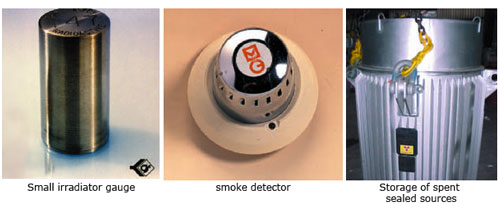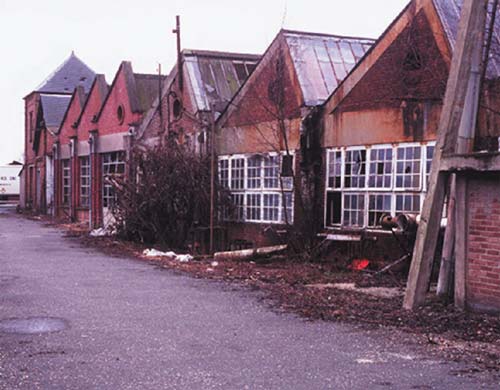Obsolete radioactive sources, the legacy of radium applications
There are numerous industrial applications for radioactive sources (sealed or unsealed). Industry produces a wide variety of items such as lightning conductors and smoke detectors, which use radioactive products, but the use of radioactive sources for non-destructive testing is by far the most common application. Non-destructive testing is used to characterise materials without affecting their integrity.

Radioactive sources in industry
Artificial radioelements are often used in industry, e.g. for inspecting welding or measuring the thickness of materials using gauges that contain a source of radiation. Depending on the radioelement half-life, their limited service life makes some sources unusable after a few months or years. There is a special monitoring system for tracking all sealed sources and their movements. The most common type of smoke detector uses a small americium-241 source. It is estimated that between 6 and 8 million of these smoke detectors are or were installed.
© ANDRA
Examples of use:
– inspection of welds by means of gamma radiography (iridium-192 or cobalt-60);
– measurement of the level or thickness of materials such as paper, fabric, plastic, or thin metal using gauges (krypton-85, caesium-137, americium-241, cobalt-60 or prometheum-147);
– detection and dosing of molecules in gas chromatography, for products such as pesticides, explosives and drugs;
– control and monitoring of the operation of nuclear reactors.
– Industry also uses powerful sources of radiation in irradiation facilities. Like medicine, it makes use of the biological effects of radiation on living matter for various applications.
These applications include:
– sterilisation of medical equipment and pharmaceutical products;
– conservation of certain food products in which it destroys the micro-organisms and parasites;
– inhibition of germination (e.g. of potatoes), removal of parasites from cereals and fruits, slowing of the physiological processes of decomposition by means of low-dose irradiation;
– extension of the shelf life of foodstuffs by means of medium-dose irradiation;
– sterilisation by means of high-dose irradiation of meats, spices and prepared foods.

Former Bayard factory
Until the 1950s this Bayard factory at Saint-Nicolas d’Aliermont in Seine-Maritime manufactured alarm clocks with luminous hands. The hands were made to glow in the dark by means of paint containing a small amount of radium. The quantities were infinitesimal, but the site of the former factory had to be decontaminated.
© ANDRA
ANDRA is also responsible for dealing with the legacy of former industrial applications of radium. For example, until the 1950s, Bayard alarm clocks used paint containing a small amount of radium to make the hands glow in the dark. These factories were closed a long time ago, but the buildings, just like some laboratory buildings, have to be decontaminated. These materials, which may contain traces of radium, are the source of some of the radium-bearing waste, which is low-level long-lived waste (LLW-LL). ANDRA is conducting research on the future and management of this waste.
Other articles on the subject « Waste Inventory »
Recoverable materials
Inventory of reusable uranium and plutonium stocks The radioactive species present in the spent f[...]
France: waste panorama (1)
An overview of French waste categories… In France, radioactive waste is split into five cat[...]
France: waste panorama (2)
An overview of French waste categories (continued)… Low- and intermediate-level short-lived[...]
US panorama
The case of the greatest nuclear power Nuclear-powered US Navy vessels, past production of nuclea[...]
Various radioactive waste
Radioactive waste from many different sources… When radioactive waste is mentioned, people [...]
Mining residues
Waste from uranium extraction The residues from processing uranium ores are disposed of on the si[...]
Medicine and research
Radioactive sources, producers of waste outside the nuclear industry… Biology labora[...]
Military waste
A separate system Using the gaseous diffusion process, the AREVA Pierrelatte facility produced en[...]
Radium-bearing waste
Legacy waste – weakly radioactive but long-lived Recent and less recent industrial activities hav[...]
Waste from Dismantling
Dismantling of facilities: graphite waste Experience with dismantling nuclear power plants is onl[...]